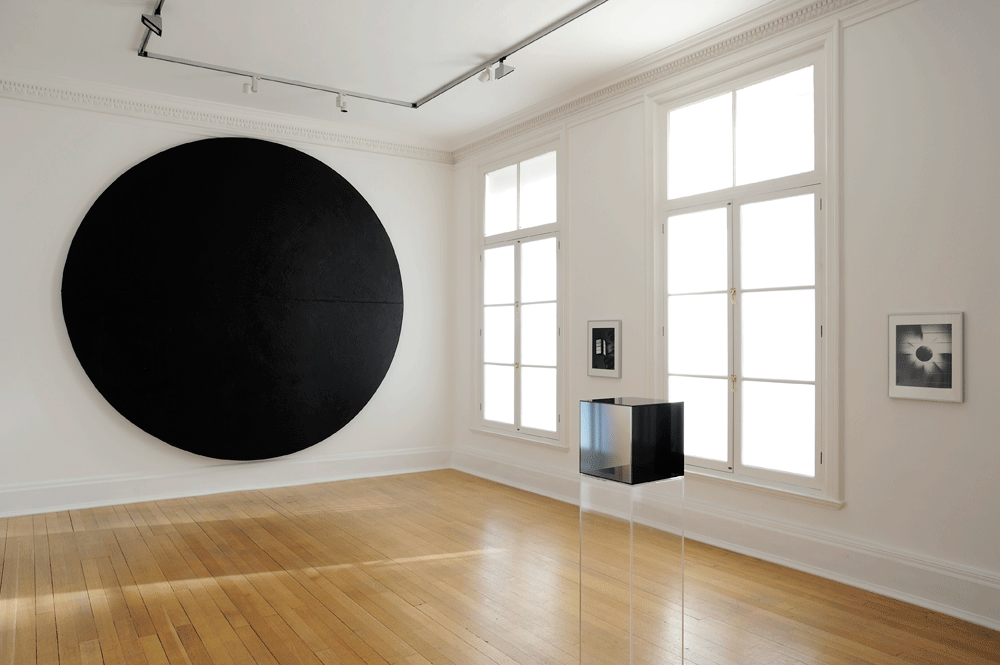Sunless
Thomas Dane Gallery, London, UK
Thomas Dane Gallery, London, UK

In the 18th century, Alta California was a province established on the West Coast by the colonizing Spanish; later ceded to Mexico, it was still later lost to history. On the evidence of ‘Sunless: Journeys in Alta California Since 1933’, an adroit curatorial project by Walead Beshty, today the appellation might refer to a republic of the mind: a community of thought about California and Los Angeles in particular – what the place is and what it means, discernable through its indigenous art. In an accompanying text, seemingly authored by the London-born, LA-based artist and made to look like a photocopied spread from an existing book, it is noted that ‘apocalypse is LA’s perennial leitmotif’, and that ‘the city, as a sequence of mute “store front planes” is a site for literal and psychological projection’. LA is, aptly for the home of the dream factory, a screen. These are familiar thoughts, well rehearsed by others. Less familiar, perhaps, is the contention that the same might be said – as this 39-work, 19-artist show inferred – of the art that emerges from it.
‘Sunless’, then, did not lack transhistorical bravado. It casually posited continuities between, say, the Light and Space artists of the 1970s and the sunshine-and-noir antics of the 1990s: a Larry Bell cube, Cube #11 (Dark Grey) (2007), mutable in light effects and passing through spectrums of blue, purple and grey as you traverse it, offers each viewer a different experience on the optical level, but its transcendent qualities are reducible to properties of physics. And in this sense, a caption on a nearby 1984 Raymond Pettibon ink drawing of three suited legs surrounding a crumpled scrap of something, ‘That dead dog on the highway is just a rag’, seemed germane in its opposing of what something suggests and what it is. Although Pettibon is more than capable of fashioning his own visual/verbal trapdoors, as his other comic-strip drawings prove. (A private dick looks at a bed: ‘Nancy Reagan slept here,’ the caption reads, a proposition both vague enough and specific enough for an infinity of narratives to descend from it.) If LA is a mirage sustained by the cultural imaginary, Beshty implies, then the deepest and most critical thing its artists can do is advertise how depth is built out of a kind of ecstatic refusal of signification, or how solidity can turn spectral. It presumably wasn’t accidental that the oldest work here, by artist/radiologist Dr Dain L. Tasker, was an x-ray, from circa 1930: an anthurium flower gone gorgeously transparent.
Despite these bold re-framings of the known, the show’s most diverting stretches were its least familiar and, perhaps, most anecdotal. James Welling’s LA-C 32 (Star Lamp) (1977), a sumptuously detailed, high-contrast study of a light seen from above (or below or frontally, since it’s that indefinite), is at once commonplace and celestial; Lewis Baltz’ affectless topographic photographs, from 1974, of architectural façades elevate unlovely buildings to some kind of dead-eyed sublime. Moving from those back to Bell’s iridescent glass cube and Tasker’s x-ray, it was hard not to think of Beshty’s own practice: his cracked FedEx’d glass cubes; his colourful abstract photos made by passing unexposed camera film through airport x-ray machines; his own cool photographic studies of vernacular architecture; his general play on material evidence and meaning. In this sense, and to a greater extent than ‘Picture Industry (Goodbye to All That)’, Beshty’s similarly Tinseltown-themed curatorial venture for Regen Projects in LA this summer, ‘Sunless’ became a fairly illuminating chapter of cultural autobiography.
At the same time, though, a whiff of hubris swirled around the exhibition, as if Beshty were appropriating a whole – albeit underplayed – trajectory of Los Angeles art and positioning himself as the synthetic endpoint of that lineage. For that reason, one might have tended to gravitate here towards the works where the curator was less visible: Bruce Conner’s 1967 silkscreen Conner for Supervisor, for instance, which is replete with hippie-era graphic design and a central image of (presumably) the artist painting an elephant with peace-and-love motifs, originally made when the artist ran for city supervisor of San Francisco. Especially when it was given such a tiny cameo role here, it was hard not to feel a frisson of excitement for that long-gone, prelapsarian moment, and for the sketchy corner of boho California that Conner inhabited. But, of course, I’m just projecting.
























